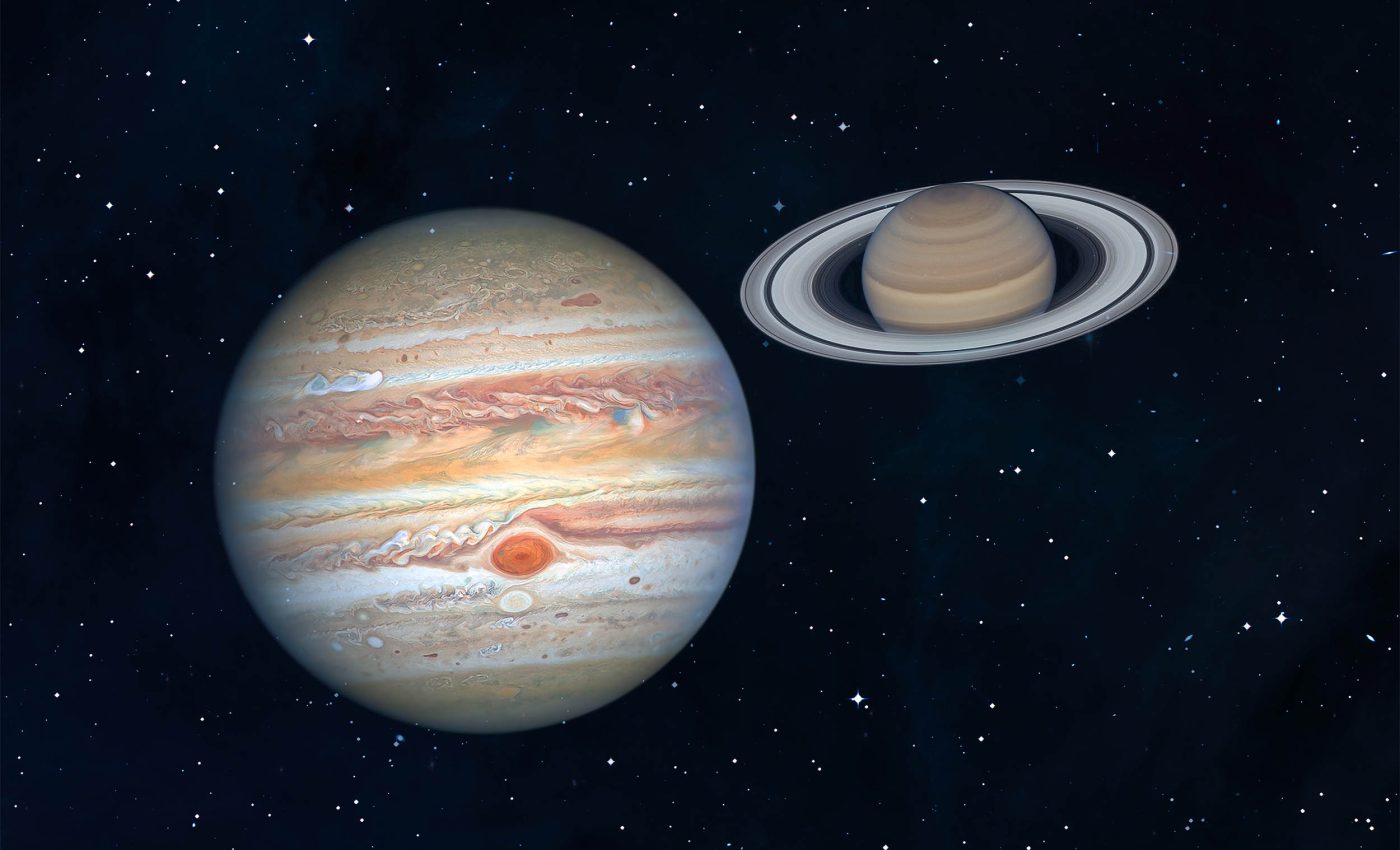
Astronomers accidentally discover a missing piece to the formation of Jupiter and Saturn
Astronomers using the James Webb Space Telescope (JWST) report finding silane – a silicon-hydrogen molecule – in a brown dwarf called the Accident. That simple molecule points to a long-missing piece in Jupiter and Saturn.
The object sits about 50 light-years from Earth, as earlier analysis established using space- and ground-based data. A brown dwarf, a star-like body too small to sustain fusion, often cools into planet-like temperatures.
Surprising silane gas discovery
JWST gathered infrared spectra that include a sharp signal at 4.55 micrometers from silane. The detection demands a rethink of how silicon moves through cold atmospheres.
The work was led by Jacqueline K. Faherty, an astronomer at the American Museum of Natural History (AMNH). Her research focuses on brown dwarfs and the chemistry of exoplanet atmospheres.
On worlds rich in oxygen, silicon prefers to form solids like quartz that condense deep down. Thermochemical models show that this process drains silane from the layers we can see.
For Jupiter and Saturn, observers searched for silane for decades and came up empty. Classic work argued that silicon would be locked into deep silicate clouds.
Silane stays hidden in giant planets
Silane forms when silicon binds with hydrogen in low-oxygen settings. In oxygen-rich air, silicon instead bonds with oxygen to make rock-forming oxides.
The Accident likely formed when the universe had far less oxygen to go around. That scarcity leaves room for silane to survive aloft and to be measured.
The new spectrum shows methane, water, and silane together, a rare trio for such a cold object. “Its spectrum reveals methane, water, and silane gas,” said Faherty.
Oxygen levels explain silane
Astronomers use metallicity – the abundance of elements heavier than hydrogen and helium – to track chemical history. The Accident’s low metallicity fits a time when oxygen was rarer, making silane more likely to persist.
Low oxygen limits how much silicon gets trapped inside rock-forming clouds. With fewer silicate seeds forming at depth, some silicon stays free to pair with hydrogen near the visible layers.
Seeing silane here explains why it goes missing on oxygen-rich giants like Jupiter and Saturn. Their deeper, heavier clouds hide silicon bearing compounds below the levels spacecraft and telescopes can probe.
Detecting the tiny signal
JWST’s prism and high-resolution spectrographs split the object’s faint infrared light into thousands of color bins. Among those bins, silane leaves a distinct fingerprint near 4.55 micrometers that stands out cleanly.
Cool temperatures help because thermal glow from the brown dwarf does not overwhelm that feature. Stable pointing and low background let JWST extract the tiny signal without the star glare that complicates exoplanets.
Retrieval methods compare measured spectra to millions of synthetic possibilities to find the best match. That approach ties the silane feature to a consistent temperature profile and a plausible chemical mix.
Repeated checks test whether other molecules could mimic the same feature. The best fits keep pointing back to silane and a chemistry shaped by low oxygen.
Implications for Jupiter and Saturn
Silicon on Jupiter and Saturn likely lives in deep silicate clouds, far below water and ammonia cloud tops. Silane higher up should be scarce because oxygen binds most available silicon into rock precursors.
This result does not change what probes measured directly in those atmospheres. It explains why silicon tracers proved elusive while other gases were logged in detail.
Future missions could sample deeper levels where silicate clouds begin to form. If models hold, silicon will rise in abundance with depth until clouds condense and lock it away.
Laboratory work can refine how silane behaves at high pressure and in hydrogen-rich gas. Those data improve retrievals so tiny spectral features can be trusted across many targets.
Nearby test case at Alpha Centauri
JWST also imaged a candidate Saturn-sized planet around Alpha Centauri A using its mid-infrared coronagraph. The first detection appeared in August 2024, while later visits did not, which fits several stable orbits.
A coronagraph, a device that blocks starlight to reveal faint neighbors, made the detection possible near a very bright star. Details come from a public preprint describing three observing epochs and the favored orbital families.
If confirmed, that world would be the closest directly imaged gas giant around a Sun-like star. Follow-ups will tighten the orbit and test whether the mid-infrared source is a planet or an artifact.
Why mention it here. Because the same techniques sharpened on Alpha Centauri help validate tiny features like silane on dim targets.
Probing silane’s wider story
JWST can survey other ancient, low-metallicity brown dwarfs to see whether silane is common in oxygen-poor skies. A pattern across many objects would turn this one clue into a rule of thumb.
Comparisons with younger, metal-rich brown dwarfs will test how strongly oxygen controls silicon chemistry. If silane vanishes as metallicity rises, that would cement the proposed mechanism.
The same chemistry should apply to cold giant exoplanets where starlight does not swamp spectra. Targets far from their stars and cool enough for deep clouds are prime candidates.
Finally, models of cloud formation will factor in silane as a bridge between gases and rock-forming condensates. That bridge helps link what we see in spectra to what seeds clouds at depth.
The study is published in Nature.
—–
Like what you read? Subscribe to our newsletter for engaging articles, exclusive content, and the latest updates.
Check us out on EarthSnap, a free app brought to you by Eric Ralls and Earth.com.
—–













